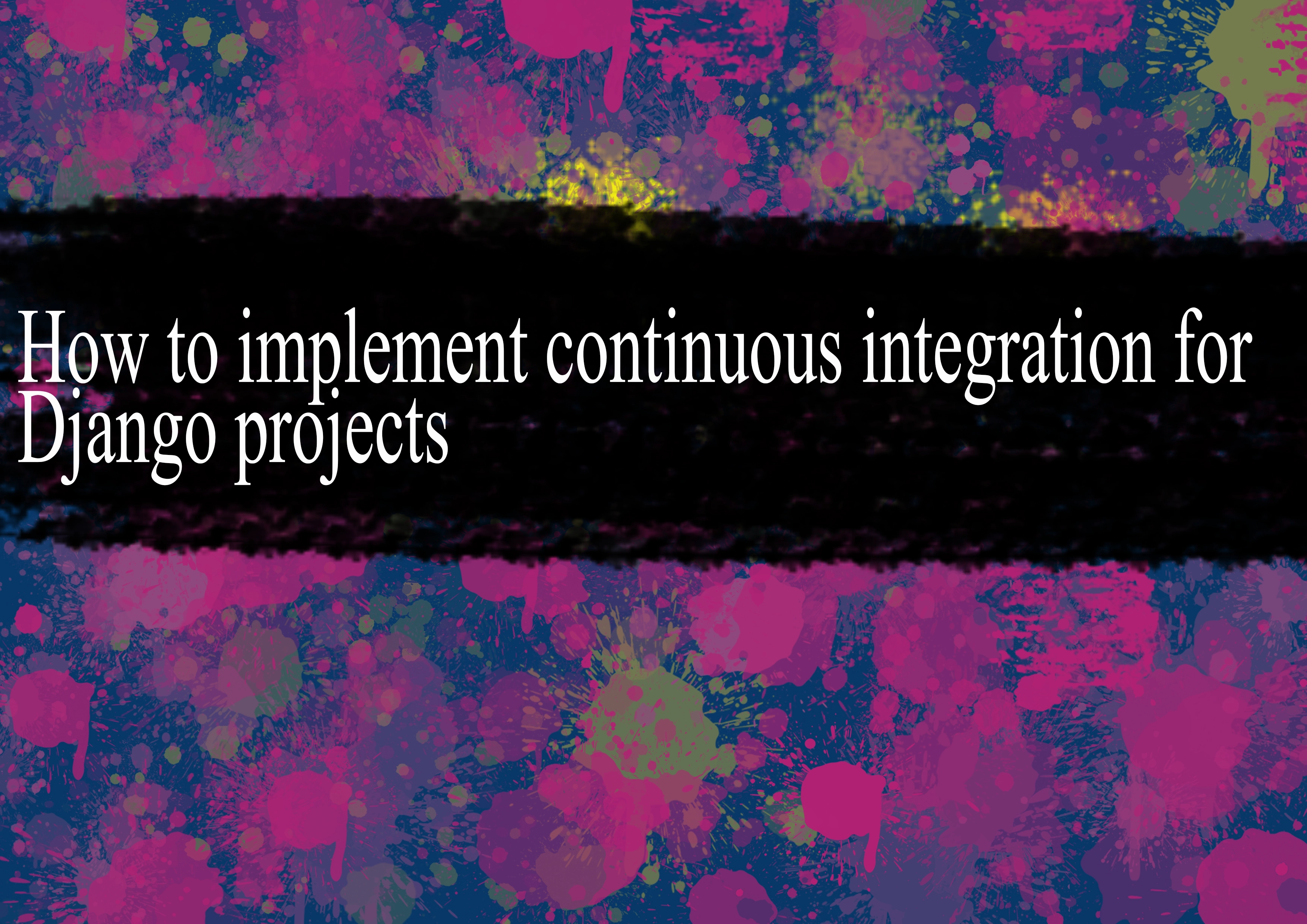How to implement continuous integration for Django projects

Implementing continuous integration (CI) for Django projects involves setting up a pipeline that automatically builds, tests, and possibly deploys your application whenever changes are made to the codebase. This helps catch bugs early, ensures that your codebase is always in a deployable state, and improves collaboration among team members. Below are the general steps to implement continuous integration for a Django project:
Version Control System (VCS): Use a version control system like Git to manage your Django project's source code. Platforms like GitHub, GitLab, or Bitbucket are commonly used for hosting Git repositories.
Choose a CI Service: There are several CI services available, such as GitHub Actions, GitLab CI/CD, Travis CI, Jenkins, CircleCI, and others. Choose one that integrates well with your version control platform and fits your project's needs.
Create a Configuration File: Each CI service has its own configuration file format. For example:
- For GitHub Actions:
.github/workflows/ci.yml - For GitLab CI:
.gitlab-ci.yml - For Travis CI:
.travis.yml
Here's a basic example for GitHub Actions:
yamlname: CI on: push: branches: - main jobs: test: runs-on: ubuntu-latest steps: - name: Checkout repository uses: actions/checkout@v2 - name: Set up Python uses: actions/setup-python@v2 with: python-version: 3.x - name: Install dependencies run: | python -m pip install --upgrade pip pip install -r requirements.txt - name: Run tests run: python manage.py test- For GitHub Actions:
Define the CI Pipeline Stages:
- Setup: Configure the CI environment, set up dependencies, and prepare the environment for the following stages.
- Test: Run your Django project's tests to ensure that the code functions correctly.
- Linting/Code Quality: Run linters and other code quality tools to maintain a consistent coding style and catch potential issues.
- Deployment (Optional): If you're using CI for deployment, define the deployment steps. Be cautious with automatic deployments, and consider deploying only on specific branches or after manual approval.
Configure Environment Variables: If your project requires sensitive information (e.g., database credentials, API keys), configure the CI service to securely store and provide these variables during the build process.
Integrate with Code Review: Configure CI to run automatically on pull requests or merge requests. This ensures that proposed changes meet the project's standards before merging.
Monitor CI Execution: Regularly check the CI service dashboard or logs for any failed builds or issues. Address failures promptly to keep the codebase in good shape.
Extend as Needed: Depending on your project's complexity, you may need to add additional steps to the CI pipeline, such as security scans, performance testing, or integration testing.
Remember to refer to the documentation of your chosen CI service for specific details and features. Also, update the configuration file as your project evolves and new dependencies or requirements are introduced.
-
Popular Post
- How to optimize for Google's About This Result feature for local businesses
- How to implement multi-language support in an Express.js application
- How to handle and optimize for changes in mobile search behavior
- How to handle CORS in a Node.js application
- How to use Vue.js with a UI framework (e.g., Vuetify, Element UI)
- How to configure Laravel Telescope for monitoring and profiling API requests
- How to create a command-line tool using the Commander.js library in Node.js
- How to implement code splitting in a React.js application
- How to use the AWS SDK for Node.js to interact with various AWS services
- How to use the Node.js Stream API for efficient data processing
- How to implement a cookie parser middleware in Node.js
- How to implement WebSockets for real-time communication in React
-
Latest Post
- How to implement a dynamic form with dynamic field styling based on user input in Next.js
- How to create a custom hook for handling user interactions with the browser's device motion in Next.js
- How to create a custom hook for handling user interactions with the browser's battery status in Next.js
- How to implement a dynamic form with dynamic field visibility based on user input in Next.js
- How to implement a dynamic form with real-time collaboration features in Next.js
- How to create a custom hook for handling user interactions with the browser's media devices in Next.js
- How to use the useSWRInfinite hook for paginating data with a custom loading indicator in Next.js
- How to create a custom hook for handling user interactions with the browser's network status in Next.js
- How to create a custom hook for handling user interactions with the browser's location in Next.js
- How to implement a dynamic form with multi-language support in Next.js
- How to create a custom hook for handling user interactions with the browser's ambient light sensor in Next.js
- How to use the useHover hook for creating interactive image zoom effects in Next.js